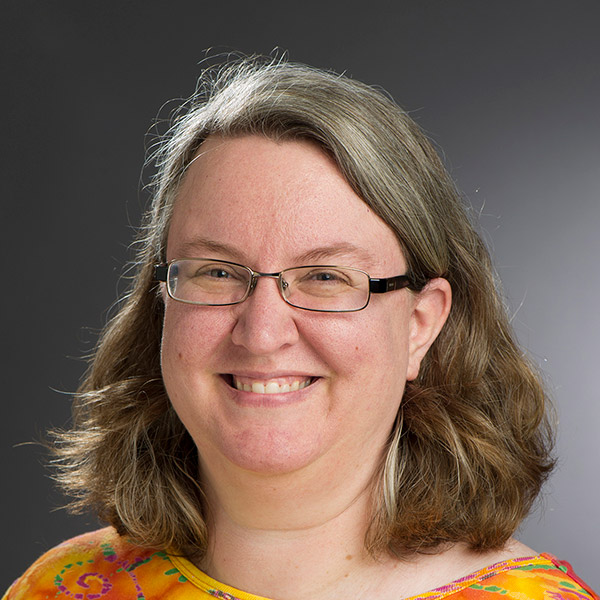Elizabeth Hane

Faculty Highlight: Elizabeth Hane is the Faculty Associate to the Provost for General Education at RIT and Associate Head of the Gosnell School of Life Science. She conducts research in the fields of metacognition and environmental science in the College of Science.
Read her perspective on a few critical thinking questions….
1. How do you teach applied critical thinking?
The methods I use vary depending on the level of the students and the subject of the class. This fall, I am co-teaching a course with Scott Franklin on metacognition (ITDS-150 Metacognitive Approaches to Scientific Inquiry), so the whole subject of the course is really about applied critical thinking. We use a wide variety of activities to encourage students to draw connections among topics and to examine how they learn. A new activity we tried this year was to have the students read Drive by Daniel Pink, which examines research on motivation and what factors influence what motivates people. Then, based on an idea started at Virginia Tech, the students participate in Pink Time, which is time released from class during which they must learn something new (Baird et al. 2015). A worksheet on motivation follows the activity, as well as a brief oral report to the class on what they learned. It’s amazing how creative and motivated they are when they can choose their own topics, which ranged from physical activities (handball, tennis, skateboarding, weight lifting, learning to ride a bike) to art (henna, drawing, beading) to technical skills (Linux, statistics, lab techniques, programming) to music (songwriting, instrument practice, singing) to hobbies (games, yo-yo tricks, magic, cooking, origami). The post-activity questions focused on asking students about what motivates them (tied to ideas from Drive) and also to examine how they best learned the activity. For example, what techniques did they use and how did it go? This led to further discussions about how to motivate yourself in other situations.
For more info about Pink Time, check out:
Baird, Timothy D., Kniola, David J., Lewis, Ashley L., and Shelli B. Fowler (2015) Pink Time: Evidence of Self-Regulated Learning and Academic Motivation Among Undergraduate Students, Journal of Geography, 114:4, 146-157.
2. Why do you think applied critical thinking is important in your domain?
Metacognition is part of critical thinking, so they are intricately intertwined.
For my other area of expertise, environmental science, we draw from a wide range of disciplinary fields (e.g. ecology, chemistry, public policy, statistics, communication, etc.) and must integrate them into a coherent set of ideas, and then use those ideas develop solutions to complex problems. Sometimes solutions aren’t feasible in the context of the community, and so students must not just know the science, but must also draw from skills in public policy and communication to find a usable solution.
In particular, I’m a forest ecologist who studies how disturbances impact forest regeneration, so I’m fascinated by complex systems and how the various factors (e.g. ice storms, insect outbreaks, land-use history, grazing, logging, wind storms, etc.) interact with each other. Ecology can be very reductionist, examining one factor at a time, so finding ways to measure multiple factors simultaneously can be challenging. That’s what makes it fun.
3. Can you share a story where quality applied critical thinking was key to your success?
My administrative roles (Faculty Associate to the Provost for General Education and Associate Head of the Gosnell School of Life Science) at RIT seem to involve nearly constant critical thinking challenges. The General Education framework and curriculum are a constant source of opportunities for conflict resolution, negotiation and problem solving. Sometimes I think that my training as an ecologist working on multiple factors has led me to administrative work – the methodologies one uses as a scientist (develop theory, gather evidence/data, test theory, analyze data, draw conclusions – then revise, rinse and repeat) also work for leadership and administration when developing solutions to problems. As in ecology, context matters. Empathy and listening skills also play key roles.
The biggest project I’ve been involved with was leading the General Education Committee in the revisions to the General Education framework in 2010; I knew going into the process that it would be impossible to please everyone. But the scientific method served us well in that process. Propose a model, then present it to the various constituents (e.g. students, faculty, administrators, staff, alumni, Board of Directors). Incorporate the feedback and also test various programs to see how the revisions would impact case studies. After the analysis, make revisions, and start over again. By the time we presented the model for approval, I had given more than two dozen presentations and therefore had a good understanding of the sticking points. We have continued in the intervening six years to make more revisions and improvements as the university adapts and changes.
4. How do you use critical thinking in other areas of your life outside of RIT?
I enjoy orienteering, which is often considered “the thinking sport” since it involves complex decision making about route choice while reading a map on the move. I’m rarely competitive with others (bad knees, so I don’t run) but I enjoy looking at maps and also tying what I see in the forest to my other areas of interest (land use history and ecology).
5. Any last critical thoughts?
It’s amazing how much sleep matters for good critical thinking!